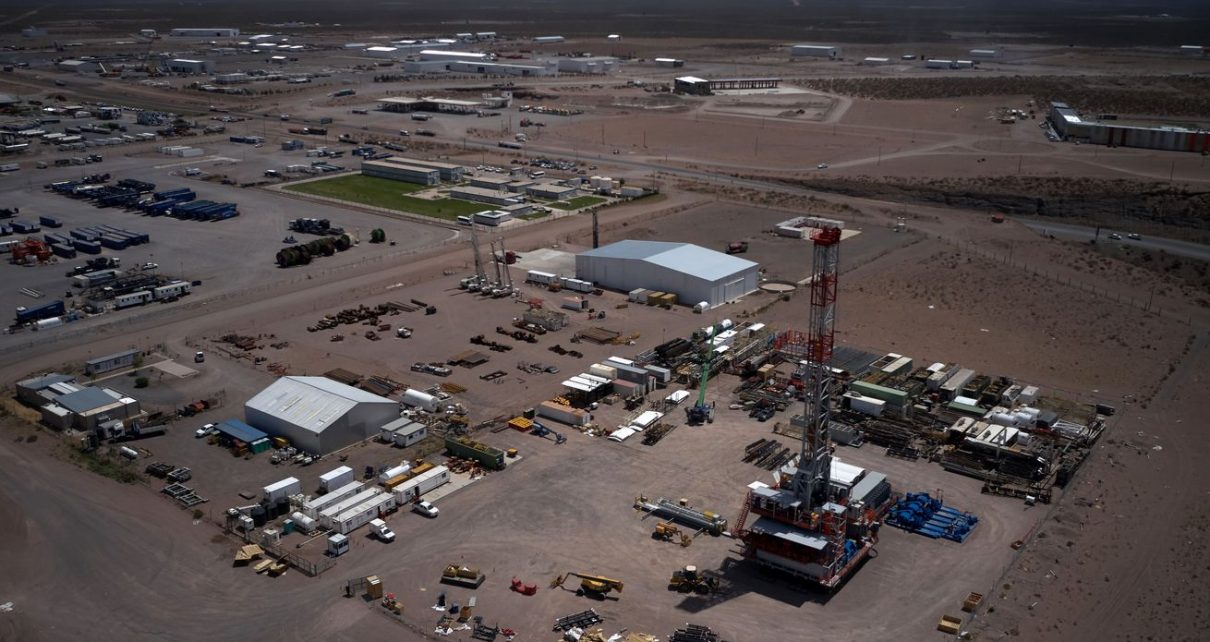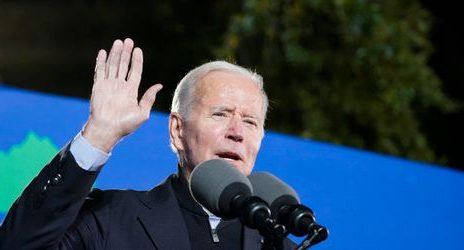
The four biggest offenders were all American banks.
As the world careens toward a climate catastrophe, the biggest banks in the world are still financing fossil fuels in the trillions of dollars.
That’s according to a recently released report by a cohort of environmental groups including the Rainforest Action Network and the Sierra Club, titled “Banking on Climate Chaos.” The report found that the 60 biggest private banks in the world have financed $3.8 trillion in fossil fuels in the five years since the Paris climate agreement was signed in 2016.
Although 2020 saw a global drop in demand and production due to the coronavirus pandemic, and fossil fuel financing fell 9 percent, the amount spent on fossil fuel extraction projects last year was still more than in 2016 — which means that the practices of the world’s largest banks are fundamentally at odds with the 2016 Paris target of limiting global warming to 1.5 degrees Celsius.
Fossil fuel companies have a couple of avenues for generating capital for their projects. The most common one is to go to a bank for a loan; the other is to sell stock or offer a chunk of future profits — but either way, they need a bank’s help.
Which means that banks have a major role to play in moving the world away from dirty fossil fuels and toward less polluting forms of energy — but only if they choose to do so. And based on the findings of the Banking on Climate Chaos report, most are very clearly not choosing to do so.
And though America led the charge in negotiating the Paris agreement more than five years ago, the report found that the four worst banks in the world for fossil fuel financing were all based in the United States.
JPMorgan Chase was the world’s worst “fossil bank,” contributing $51.3 billion in fossil fuel financing last year alone, and a total of $317 billion from 2016 to 2020.
That’s 33 percent more than the second-worst, Citibank, which spent $48.4 billion last year and a total of $237 billion since 2016. Wells Fargo came in third, with $26 billion in 2020, though the report notes that the bank’s fossil fuel financing actually fell by 42 percent in 2020. Bank of America ranked fourth, spending nearly $200 billion in the past five years.
If you add Morgan Stanley at No. 12 in the world and Goodman Sachs at No. 15, “that’s almost a third of bank financing for fossil fuels” coming from the United States, Jason Disterhoft, fossil finance expert at the Rainforest Action Network and one of the report’s author’s, told me.
Because US banks are an outsize part of the fossil bank problem, they must be an outsize part of the solution to address climate change. “The US cannot credibly call itself a global climate leader so long as its banks are driving climate change to this extent, with no plans to phase out that activity,” Disterhoft added.
As a part of its all-of-government approach to attacking the climate crisis, the Biden administration plans to involve the Treasury Department in efforts to end international financing of fossil-fuel-based energy sources.
“It’s the first time we’re seeing an administration sketch out what an agenda in this space looks like,” Disterhoft said.
But banks in other countries have work to do, too.
France’s BNP Paribas was the worst in the European Union. It spent $41 billion to finance fossil fuels in 2020 — a 41 percent increase from 2019. Japan’s MUFG was the worst in Asia, and sixth-worst overall.
No South American or African banks made the list of the world’s 60 biggest banks.
Where’s the money’s going?
The report includes several case studies that show the impact big banks financing fossil fuels has on communities around the world that are disproportionately impacted by a climate crisis they largely didn’t create.
Citibank was named the worst bank for “funding the expanders” — that is, for funding the top 100 companies that are expanding their use of fossil fuels. One of those companies is the Canada-based energy transportation company Enbridge, whose Line 3 oil pipeline expansion is facing fierce opposition from Indigenous groups in Minnesota.
China’s CNOOC Limited and France’s Total — two of the world’s largest oil and gas companies — have been financing the East African Crude Oil Pipeline, which would carry 216,000 barrels of crude oil per day from Uganda to Tanzania.
If completed, it would become the world’s longest heated pipeline and would blast over 33 million tons of planet-warming CO2 into the air — more emissions than are currently produced by the two countries combined.
And in yet another case, BP, Shell, ConocoPhillips, and Equinor are supporting fracking in Argentina’s Vaca Muerta oil and gas reserves, found in Patagonia. Although Indigenous communities are opposed to the project, big banks have been providing millions in subsidies to oil and gas companies interested in developing the region, which would have catastrophic impacts on global warming.
Ahead of this year’s UN Climate Change Conference, the pressure on the world’s largest banks is now twofold: stop funding companies that are expanding their use of fossil fuels, and agree to phase out financing for fossil fuel projects in alignment with limiting warming to 1.5 degrees C.





